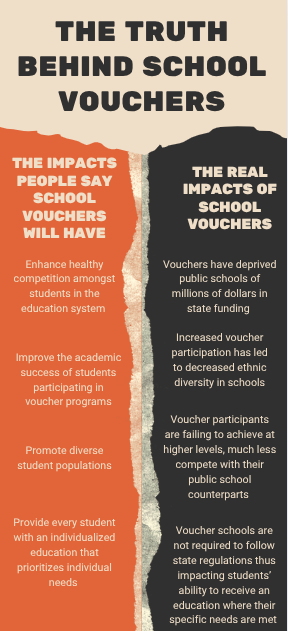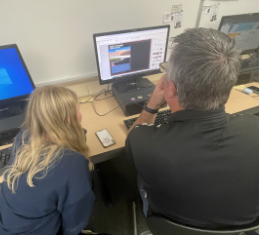On a recent Tuesday, Jr. Kaila Vork was picking up her little brother from North Holland Elementary School. “As I was picking up Jonas, out of the corner of my eye, I saw a little girl probably in first or second grade with a blue crop top and black ripped jeans, hair slicked back into a neat ponytail. When I was in elementary school I went to school in Matilda Jane dresses and had messy curls; I did not care about my appearance or who I impressed.”
In a world where innocence should flourish, there is a world full of children in their adolescence growing up too quickly. Five-year-olds strut out of their homes wearing bright pink crop tops, with hair freshly done. Six-year-olds obsessively look in the mirror focusing on their insecurities. Four little girls are seen putting on makeup when walking into the bathroom at a restaurant. Featured on TikTok, eight-year-olds are performing dances for the world to see.
“Every time I work and use the bathroom I see little girls probably around the age of seven or eight redoing their makeup,” waitress Bre Russell said. Step into Target and shoppers are immediately met with aisles of children’s clothing dominated by crop tops and mini skirts. Social media is filled with unrealistic beauty standards, offering distorted role models that only serve to amplify these young girls’ insecurities.
While waiting for their meals, parents place an iPad in front of their kids, not even trying to entertain them. YouTube is blaring from the speaker. Cocomelon is dancing across the screen. Kids are mesmerized. While their food comes, they eat and watch at the same time. Kids don’t get involved in conversations anymore. They are scared to talk to someone in person or even over the phone. They only snap and text. Kids get devices at a very young age. Instead of playing outside with their friends, they are sitting inside on their screens.
“I play three hours of video games and watch 45 minutes of TV daily,” ten-year-old Wesley Schuld said. “I watch two hours of TV daily,” nine-year-old Eloise Schuld said. These kids spend countless hours wasting their lives in an imaginary world portrayed on TV.
“My favorite childhood memory is when my grandparents lived in a house in Grosse Point and for Christmas, my whole family would get together and drive down to celebrate. It was always really nice to spend quality time together” Jnr. Maggie Rothstein said. At this rate, these kids are going down a path of social media and technology only, their favorite memories will be watching TV and playing video games.
In recent years, the phrase “kids grow up too fast” has become increasingly common among parents, educators, and child psychologists. But parents and adults are the reason why kids are “growing up too fast”. The damage to their children originates from unknowingly providing the source (technology overuse) and not truly understanding or taking action before the negative effect is shown through the children and their actions.
According to 2nd-grade teacher Elizabeth Kuiper, kids know how to play games like UNO and Monopoly primarily because these games are apps that they play on their phones with their opponents being AI versions of people. So many great social skills can be learned through playing board games. Kids learn teamwork, patience, and how to win and lose gracefully. Board games can also benefit language development. All of these benefits are taken away when these games become apps on a phone or iPad.
Social media and technology have a largely detrimental effect on younger generations. Even the way younger generations such as Gen Alpha act out picking up a phone and hanging up is different compared to Gen Z and older generations.


Freshmen and sophomores made a gesture similar to the picture on the left. Meanwhile, most upperclassmen portrayed something identical to the photo on the right. This difference in hand gestures shows how different the two generations are based on how they grew up and the presence of technology.
The addictive nature of these technologies takes away from essential real-world experiences and face-to-face interactions. Parents and educators must recognize these challenges and work together to create a balanced approach that recognizes the negative impacts while harnessing the positive







